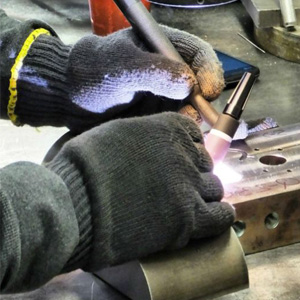 As products become smaller, smarter, and more complex, manufacturers need joining methods that can handle extremely tiny components without compromising strength. Microscopic TIG welding (often called micro-TIG or micro-arc welding) has emerged as a key technology for industries that require precision on a micro scale. While it’s based on the principles of traditional TIG welding, it’s engineered for ultra-fine detail, allowing manufacturers to repair, modify, or assemble miniature metal parts with exceptional accuracy.
As products become smaller, smarter, and more complex, manufacturers need joining methods that can handle extremely tiny components without compromising strength. Microscopic TIG welding (often called micro-TIG or micro-arc welding) has emerged as a key technology for industries that require precision on a micro scale. While it’s based on the principles of traditional TIG welding, it’s engineered for ultra-fine detail, allowing manufacturers to repair, modify, or assemble miniature metal parts with exceptional accuracy.
1. Early-Stage Design & Prototyping
Before a product enters mass production, engineers often need a way to test tiny components or adjust features without re-manufacturing entire parts.
How micro-TIG fits in:
-
Enables precise adjustments to small components during R&D
-
Supports rapid prototyping for electronics, medical tools, sensors, and micro-mechanical parts
-
Helps engineers evaluate material behavior in extremely small weld zones
Because it can add microscopic amounts of metal in controlled areas, it’s valuable for tuning designs before tooling is finalized.
2. Precision Assembly for Miniature Components
Certain components—like sensor housings, medical instrument joints, or tiny mechanical parts—require strong, localized metal bonds.
Where micro-TIG is used in assembly:
-
Joining very small parts where adhesives or mechanical fasteners won’t work
-
Creating micro-scale weld beads for compact devices
-
Reinforcing fragile or thin materials without affecting surrounding regions
Its precision allows manufacturers to assemble products that couldn’t be built with conventional welding techniques.
3. Mold and Tooling Repair
In many industries, molds and dies wear down over time, especially around edges or detailed features. Re-making an entire mold is expensive.
Micro-TIG is used to:
-
Repair micro-cracks, pits, or worn edges on molds
-
Add small amounts of metal to rebuild precision features
-
Extend the life of high-value tooling
Because it can target extremely small areas, it reduces the amount of finishing work needed afterward.
4. Electronics and Micro-Device Manufacturing
Micro-TIG supports sectors where components must be conductive, durable, and heat-sensitive—like smartphones, sensors, and instrumentation.
Typical roles include:
-
Strengthening small metal contacts
-
Repairing micro-connectors
-
Modifying metal housings without damaging nearby circuits
Its localized heat zones make it suitable for delicate assemblies where broad heating would cause damage.
5. Medical and Scientific Instruments
Manufacturers of surgical tools, implants, and diagnostic instruments rely on strong, reliable micro-scale welds.
Micro-TIG provides value by:
-
Repairing miniature surgical tools
-
Joining thin, biocompatible metals
-
Creating precise surface features on specialized instruments
Its accuracy helps maintain tight tolerances required in medical manufacturing.
6. Quality Control and Final Finishing
Because many parts today require exact specifications, micro-TIG often plays a role after machining or fabrication.
In finishing stages, it supports:
-
Correcting small imperfections
-
Adding detail or reinforcing stress points
-
Addressing flaws without restarting production
This helps manufacturers reduce scrap and meet stringent quality requirements.
Conclusion
Microscopic TIG welding fits into modern manufacturing as a high-precision, low-impact metal-joining method that supports prototyping, assembly, repair, and finishing. It enables manufacturers to work at scales that traditional welding cannot achieve, making it crucial for industries pushing toward miniaturization, stronger materials, and more compact designs.

